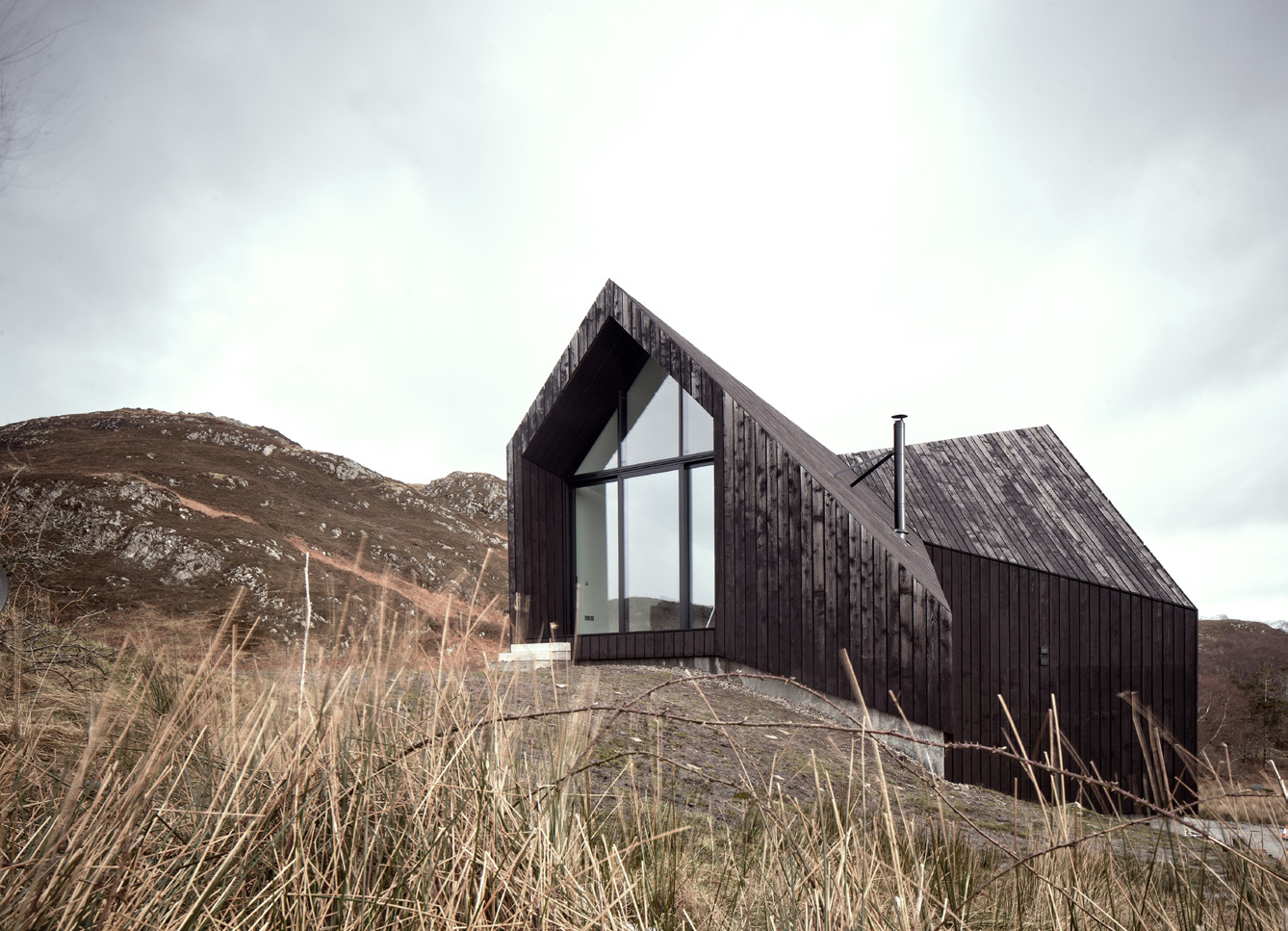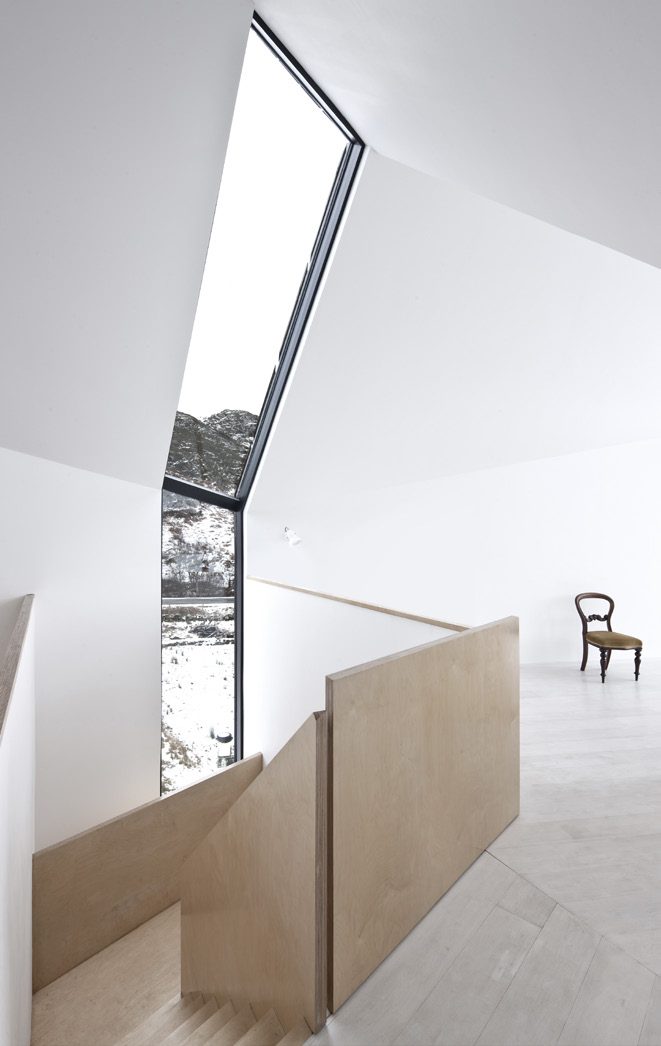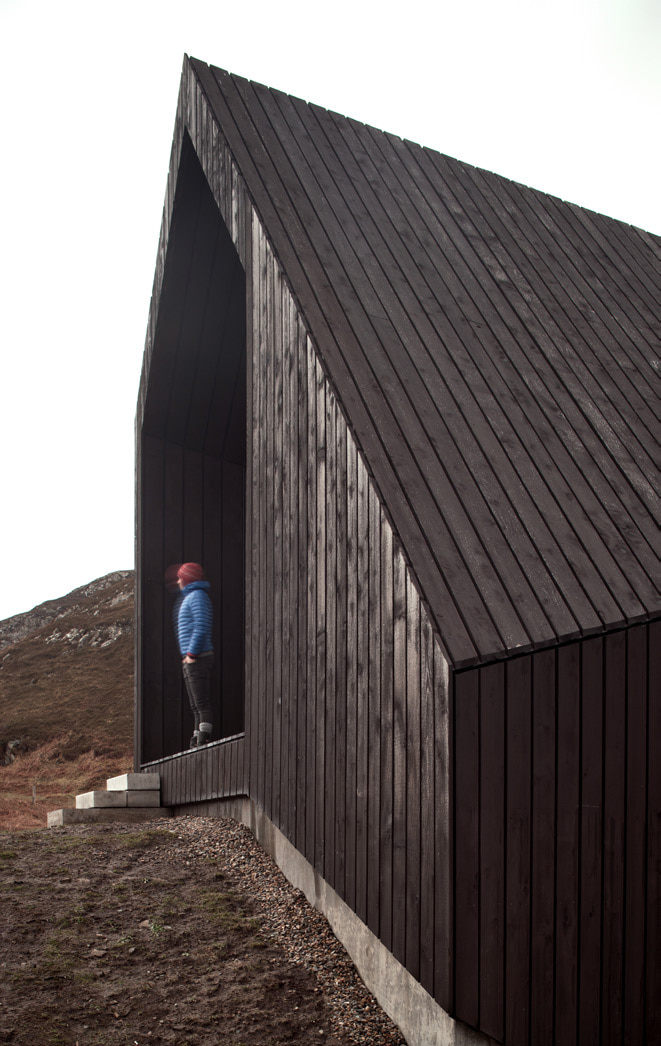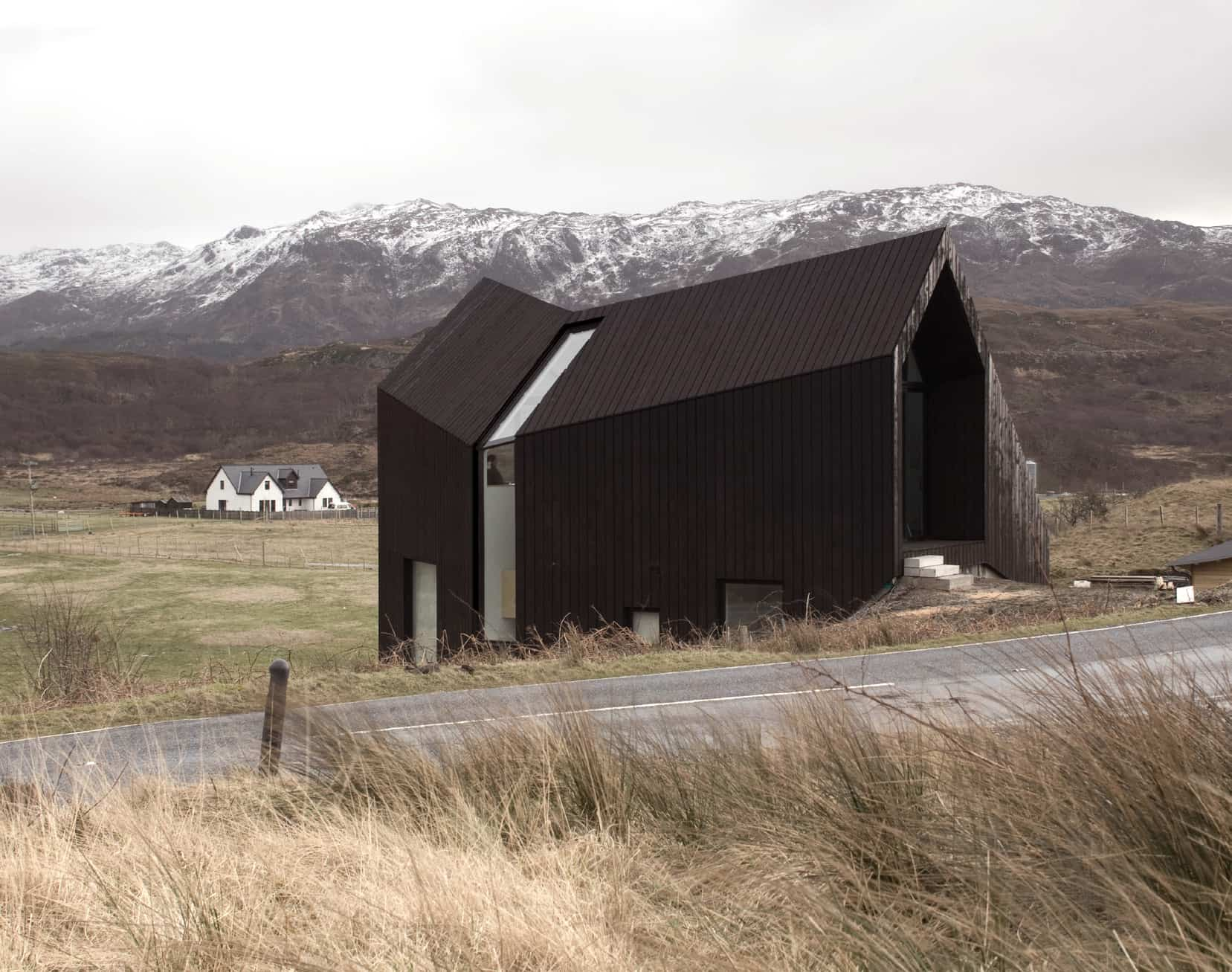This part subterranean new-build house is located on steeply sloping former rough grazing land. The clients, already living in this isolated location, were keen for proposals that could capture the spectacular sunrise over the mountains and sunset behind the islands.
Construction carried out by a local house and boat-building firm was low tech. It consisted of an exposed concrete base sitting beneath the timber frame superstructure. There is a clear distinction in the internal arrangement of space and function across three levels, denoted by changes in light levels, scale of spaces, ceiling heights and materials.
The entrance is at the lower level into a darker, utilitarian concrete bunker. Progressing up through the building, via the birch ply staircase, spaces enlarge, daylight levels and ceiling heights soar, and materials have a lighter finish. The external colour was debated, with black was chosen to reflect the characteristics of peat, gorse and stormy skies.
The exposed location, storm-battered climate and very low performance of the client’s previous dwelling determined the environmental brief. The building had to be extremely sturdy and very warm. Renewable energy systems were also very appropriate for this isolated location. The ability for the occupants to control space heating and fresh air swiftly and easily was imperative as the weather coming off the north Atlantic changes extremely quickly.
Environmental considerations vary from building position and orientation, local labour, skills and materials, to the inclusion of an air source heat pump and super insulation. The insulation provides a U-value of 0.15 (W/m2k) to walls and roof.
Timber technologies
The timber superstructure is a series of deep ribs at 450mm centres with V-shaped plywood gussets fixed either side. The connecting opposing rafters and studs within a specific zone ensured no internal structural bracing is visible. This also allowed for significant spans, improved airtightness levels, and the ability to insulate well.
The roof and wall construction sections are almost identical. The cedar cladding has been detailed to allow for expansion, contraction and the movement of surface water during these altered states.
Surface water is channelled into 25mm cladding grooves. Should any water run underneath the roof cladding, a profiled metal sheet beneath the timber, lapped over a concealed rubber edge detail, simultaneously directs water away from the building and protects the cavity to the rear of the vertical cladding.
The 25mm shadow gap from which any stray surface water is expelled is formed by angled cuts to all cladding boards. This 25mm dimension appears across the building in several timber interface, door, window, and shadow gap details.
Timber related features
Construction was carried out by a local house and boat-building firm. The architect worked with them to develop specific construction details common to boat building. These details provided the contractor with a cutting list for each stud and rafter, which were all different. This allowed him to construct the frame accurately, to reflect the proportions of the concept models and drawings.
With boat-building techniques, the project team could realise and reinforce the original concept. The building should appear simply as another partly submerged rugged form, surrounded by wild grass.
By maintaining total control of the site and others in the area, the contractor has been able to offer apprenticeships to local school leavers. This building was particularly popular with the apprentices. It is unorthodox relative to others in the area and considered ‘experimental’ by the entire workforce.
There was a significant opportunity for alternative methods of construction and finishing which the architect and contractor developed together. This resulted in the contractor’s team taking real interest and total ownership of the building. While the form is not traditional, the method of construction reflects local expertise, knowledge and endeavour.
Header image credits: David Barbour
A library of sustainable building materials
Our website includes a web-based resource that showcases sustainable, traditional, innovative, recycled and low carbon building materials. If you are looking for inspiration or information on different types of materials to consider for your project, visit our materials library.





